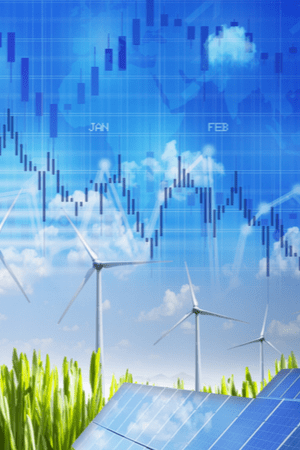Buy green government bonds
Investing in green government bonds is an investment form to invest sustainably in green energy. Green energy is a clean form of energy production in which CO2 emissions are reduced. To achieve this, global agreements were made in Paris in 2015. In 2030, emissions should already be 49% lower. This is important because our climate is changing, the earth is warming up and sea levels are rising as a result of CO2.
How does investing in green bonds work?
Green bonds are bonds where the money raised is used to invest in green investments that aim to reduce CO2 emissions , for example . You can invest green in energy production, home insulation, rail infrastructure and making cities and countryside weatherproof against extremes.
Are green bonds in demand?
It is true that investors like to invest in green government bonds, because it is an attractive way to invest. Pension funds once urged the Dutch state to issue green government bonds. They in turn now show that the money invested is being used in a good way.
The Dutch government has issued 6 billion euros in green government bonds. The fact that no more has been issued, although there is great demand for them, is related to the strict conditions that green bonds must meet. For example, with green investing you are assured that the money lent actually benefits sustainable investments.
There are several agencies and companies that issue green bonds:
- Governments of large countries such as Germany, France, the United States and also the Netherlands.
- Semi-governmental bodies such as municipalities, provinces and nationalised companies.
- Supranational institutions . An example of this is the EIB (European Investment Bank).
- Companies from all kinds of sectors, e.g. the financial sector and the energy sector.
Are there any conditions for bonds to be green bonds?
Green bonds are bonds whose money is invested in projects that are beneficial to the environment. In principle, there are no strict conditions that such project financing must meet in order to obtain the green label. Any party that issues bonds can place green bonds on the market. For this reason, various financial institutions, united in the International Capital Market Association (ICMA), have drawn up a number of guidelines for issuing bodies to apply when issuing green bonds. This has resulted in the so-called Green Bond Principles, abbreviated GBP . There are now a number of organisations where issuing parties can have their green bonds checked to see whether they comply with the GBP.

What are the benefits of buying green bonds?
In addition to enjoying attractive financial benefits, by purchasing green bonds and the associated investments in sustainable, green projects , you also contribute to a more sustainable society. And that is no less important!
Compare brokers and start investing in bonds
Are you excited about investing in bonds after reading this article? Compare brokers that offer bonds and find the broker that suits you best!